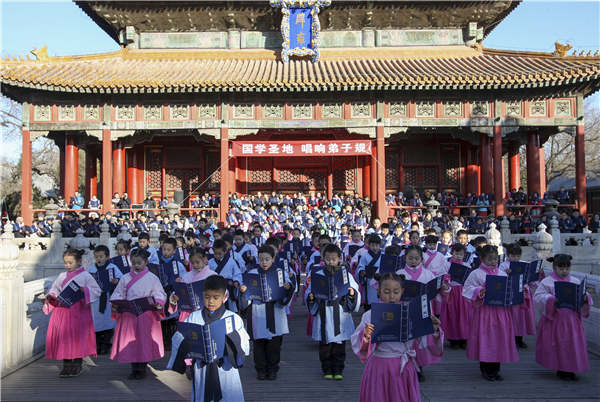Confucian legacy
 |
|
Children read classics by Confucius as part of an event at the Confucius Temple in Beijing. WANG ZHUANGFEI/FOR CHINA DAILY |
She cites the example of the Confucian temples in Nanjing and Suzhou.
While the design of the temple in Nanjing-the biggest examination hall in ancient China-revealed the city's prominence in port trade, the temple in Suzhou bears influences of garden design, which the city is known for.
"The two places have various cultural meanings, which are also reflected by the architecture," she says.
"However, the temple in Nanjing features a Suzhou-style architecture after renovation."
The report also points out that half of the Confucian temples are located in old towns, which are facing huge pressure amid the renovation of traditional neighborhoods.
"The Confucian temples are centers of many old Chinese towns," says Tang Yuyang, a professor at Beijing University of Civil Engineering and Architecture.
"Nevertheless, when renovating these temples, their adjacent historical landscapes are easily neglected."
She says that many structures near such temples are demolished, creating challenges for the survival of such sites.
The report says about 30 percent of Confucian sites are still not open to the public and some of them are not even known to the local people.






















